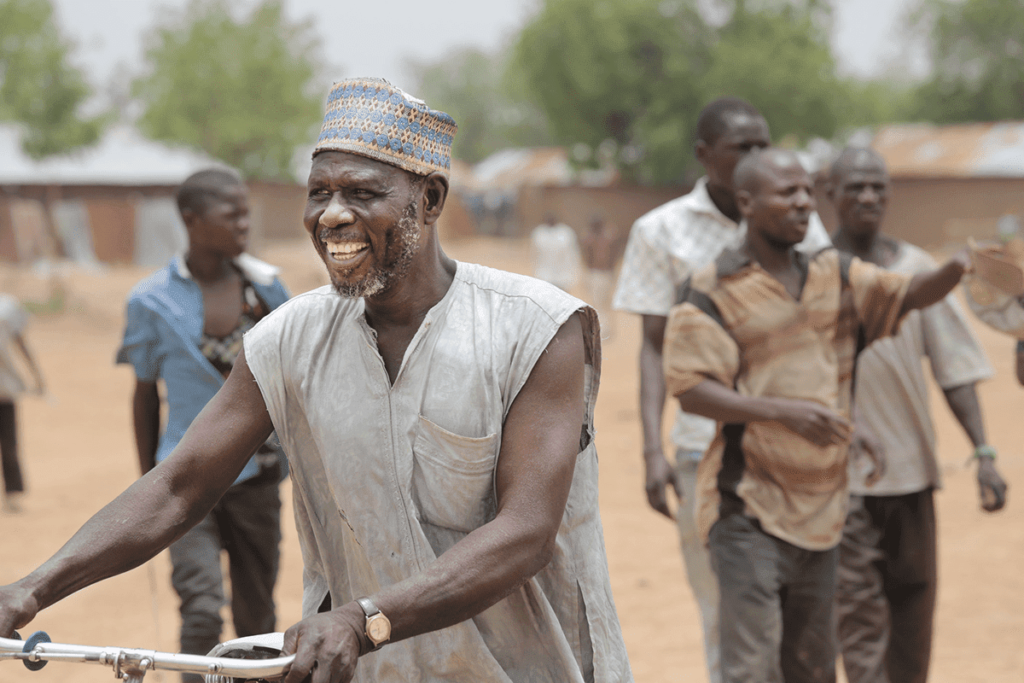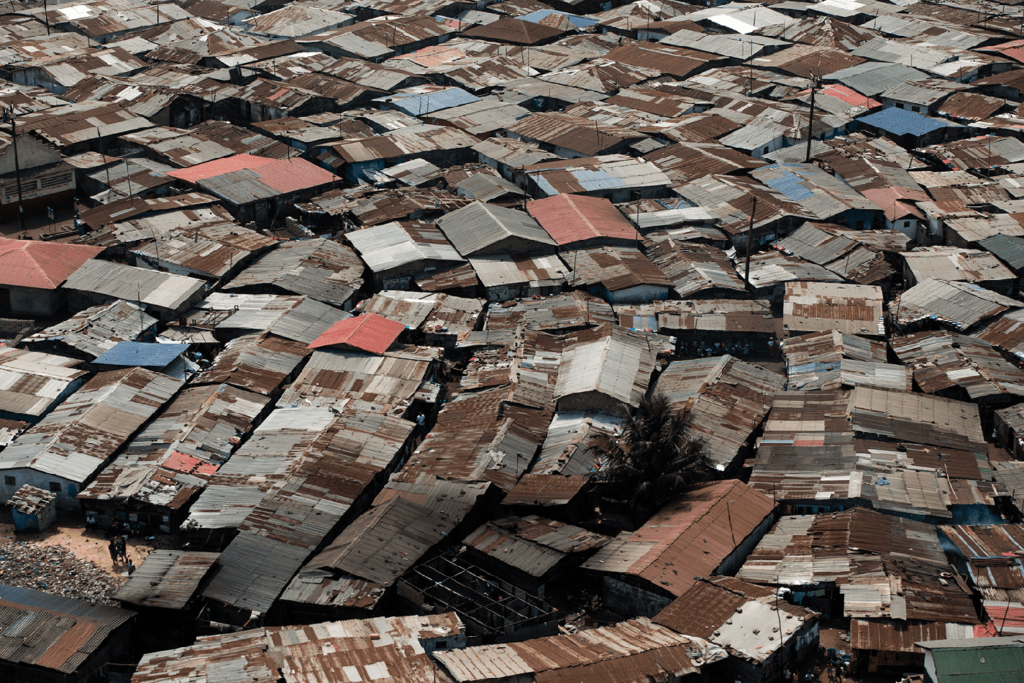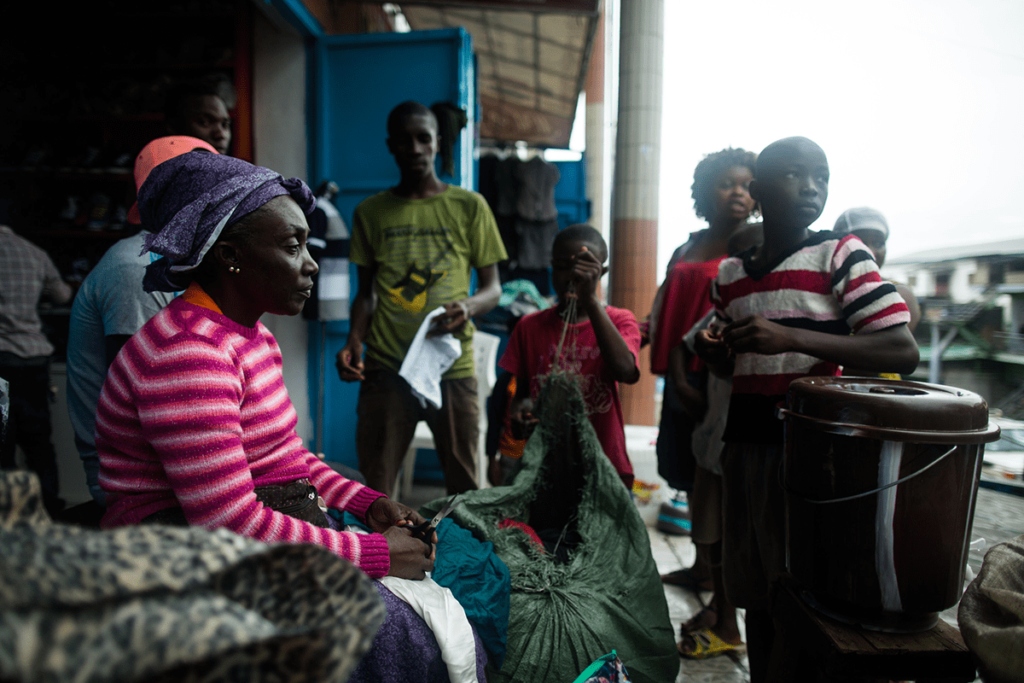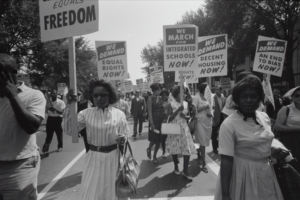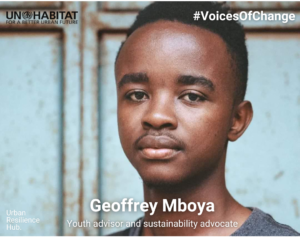The recent CCFLA report ‘The State of Cities Climate Finance’ provides further evidence on an already established argument: cities are central actors in the fight against climate change while still facing great challenges in mobilizing finance for much needed climate action. Specifically, they still lack “technical and financial capacity, control over resources, and workable funding models” (CCFLA 2021). This study, together with other reports such as the 2020 UNEP Adaptation Gap Report (UNEP 2021) – showing the existing gap between climate adaptation and mitigation efforts – are of great importance in advocating for further climate action and the mobilization of resources. However, they miss an essential angle of the global climate emergency: its relation to urban poverty and informality.
This void resembles the reality of informal settlement residents, whose voices are still often unheard and are also among the most vulnerable groups to climate hazards (Satterthwaite et al., 2020). Apart from lacking basic services and resilient infrastructure, slum communities are also often situated in dangerous areas such as low-lying land, river banks and steep hillside slopes. Climate change and its effects contribute to exacerbating existing inequalities by increasing slum residents’ health risks, disrupting their livelihoods and preventing already scarce development opportunities. Globally, urban informal dwellers account for approximately 1 billion people (UNStats, 2019), one third of the urban population. Considering that this number is estimated to triple by 2050 (UNStats, 2019), due to a projected increase in rural-urban migration of 2.5 billion people (CCFLA, 2021a), it is important to provide regional and local governments with the tools and resources to include these communities in the ‘run to adaptation’.
Missing Link, Missed Opportunities
The effects of climate change, poverty and informality are strongly intertwined and meet at the urban level. However, this is not fully reflected in international efforts for climate action and poverty reduction. Despite cities hosting more than half of the world’s population (CCFLA, 2021b), and spending and investing the most in climate mitigation and adaptation (OECD, 2019), they received less than 5% of direct global funding for adaptation between 2010 and 2014 (CCFLA, 2021b). Moreover, adaptation projects focus mostly on rural and agricultural areas (ODI/HBS, 2020), including in regions such as Sub-Saharan Africa where circa 40% of the total population lives in cities (WB, 2020), and half of this lives in slums (WB, 2018).
This evidence highlights the missed opportunities and benefits in allocating funds to increase resilience within slums. It is estimated that US$1.8 trillion investment in climate adaptation projects such as early warning systems, climate-resilient infrastructure, and global mangrove protection could generate US$7.1 trillions of avoided costs and non-monetary social and environmental benefits (UNEP, 2021). Furthermore, due to the poor conditions or simply lack of infrastructure and basic services within informal neighborhoods and townships, it should be possible to leapfrog directly to sustainable and resilient infrastructure systems avoiding the less efficient and resilient infrastructure of high income countries (UN-Habitat, 2018).
Due to the long-term lifespan of infrastructure and the high costs involved (UNOPS, 2018), it is essential to avoid the development of more polluting and gray infrastructure systems which will also become more and more exposed to climate change effects. Finally, the allocation of resources for the development of resilient infrastructure and adaptation initiatives within informal settlements would increase informal communities’ awareness, livelihood opportunities and perception of belonging to the city. Increasing access to public goods and services for the urban poor will trigger further equitable economic growth (Cities Alliance, 2020).
Deconstructing the Issue
Despite the aforementioned win-win relationship between urban poverty reduction and climate action, informal settlements are still not considered priority areas of intervention by international climate finance institutions nor by many local and national governments (IIED, 2018). Urban vulnerable groups are still left behind due to multiple reasons.
First of all, the international climate funds don’t have the proper institutional mechanisms and channels in place to reach local governments, informal communities and grassroots organizations (IIED, 2018). There is a lack of intermediate organizations and institutions that act as a trusted mediator between the international donors and local communities. Moreover, most climate finance resources are intended for national governments through the National Designated Authorities and Accredited Entities systems (GCF, 2021). Although new facilities and programmes are emerging to address the adaptation gap and support cities and communities, more could and should be done in this sense.
At the same time, local and sub-national governments are often not able to build resilience within informal communities, nor see it as their obligation. Many cities, especially secondary cities in emerging economies, where informality is widespread, lack the capacity to manage large amounts of resources effectively and transparently. Moreover, being often perceived as illegal, informal settlements are not included in city assessments and planning (Satterthwaite et al., 2020), with the risk of eviction and demolition of housing in extreme cases. This lack of data and knowledge only contributes to worsening the urban vulnerability situation.
Finally, while being the most well-placed for implementing effective climate adaptation initiatives due to their knowledge of local conditions, needs, and customs, community-based organizations are also very limited in terms of capacity, resources and political power. Furthermore, their ability to scale-up successful initiatives to the city level is also limited by the impossibility of overriding community boundaries without the involvement of the municipality (UN-Habitat, 2018). A city-wide approach and further cooperation with local authorities are therefore essential for strengthening inclusive urban resilience and pursuing climate action. In order to achieve this, specific mechanisms are needed to create the necessary bridge between international finance, local governments, and urban informal communities.
A Proven Mechanism: Community Upgrading Funds
One solution that links the efforts in climate change adaptation and poverty reduction at small and medium scale is the creation of urban poor funds capitalized by donors. These bottom-up mechanisms work as catalysts in slum upgrading through the provision of ‘strategic support for community-initiated housing and infrastructure projects that have the potential for scaling-up’ (Habitat for Humanity, 2008). Cities Alliance Community Upgrading Fund (CUF) is a mechanism that provides financing for small infrastructure projects selected by the communities themselves, helping residents see tangible progress quickly while the longer-term objectives of the programme unfold.
The CUF contributes to enhancing community engagement and ownership on the design and implementation of projects by responding to the needs of the residents with their proposed ideas. It acts as a mediator between the informal settlements and local governments which would, otherwise, hardly communicate and collaborate. The small size of the infrastructure assets ensure that communities are able to see rapid and concrete results which act as a driver for further participation and socio-economic development.
In Liberia, for example, Cities Alliance established the CUF in 2016, across informal settlements in Greater Monrovia. Since then projects have benefited over 350,000 people. The Greater Monrovia area is characterized by communities that are socially fragmented and live with enormous backlogs on basic and social infrastructure including an absence of road access, drainage, toilets, and drinking water (Cities Alliance, 2016). This lack of infrastructure has an impact on people’s lives severely undermining cohesion, productivity and health and is worsened by the exposure to climate-induced risks.
The Need for a Concerted Effort
Cities are struggling to retrieve the necessary financial resources and build up the decision making capacity to improve climate adaptation as well as to fight urban informality. With more and more existing evidence of the benefits of relating these two major issues, it is extremely important to combine the climate action efforts with improving slums’ infrastructure and socio-economic development. The city system as a whole benefits from improving the living conditions and resilience of informal settlements. Acting differently would cause long-term negative effects on already vulnerable communities. With climate change effects worsening day by day it would be a missed opportunity affecting the life outcomes of many. Therefore, a concerted effort is needed from the international community, funds and governments in order to build more sustainable, resilient and inclusive cities. Cities Alliance will continue work as a facilitator in support to vulnerable communities and urban poor, governments and civil society organizations to build local adaptive capacity.

